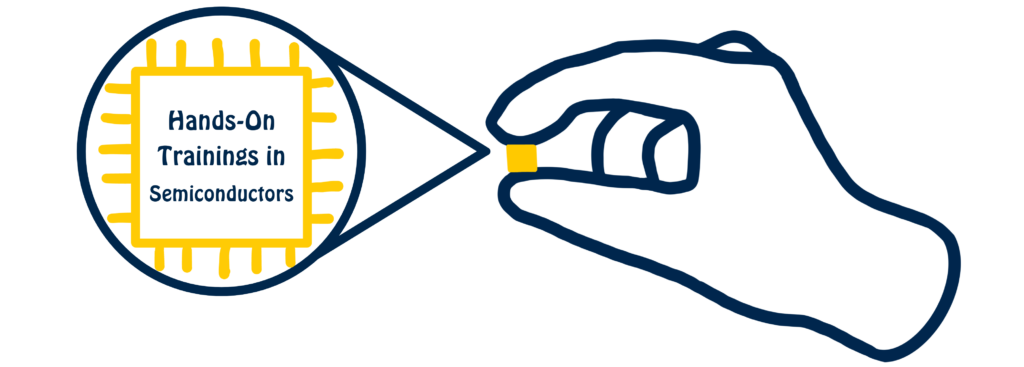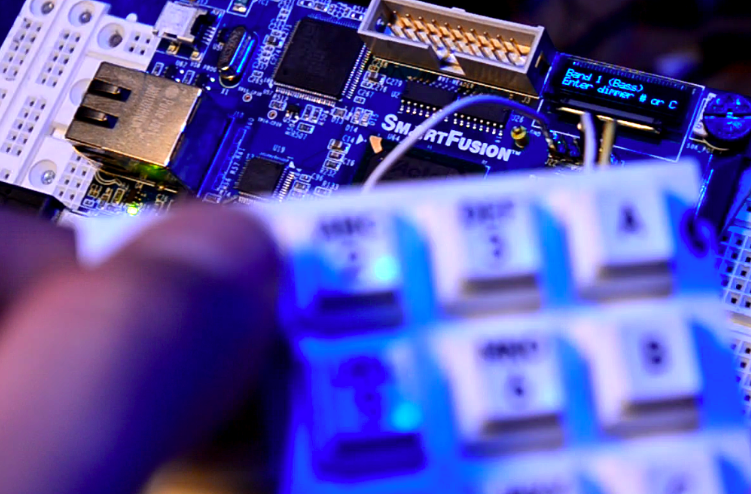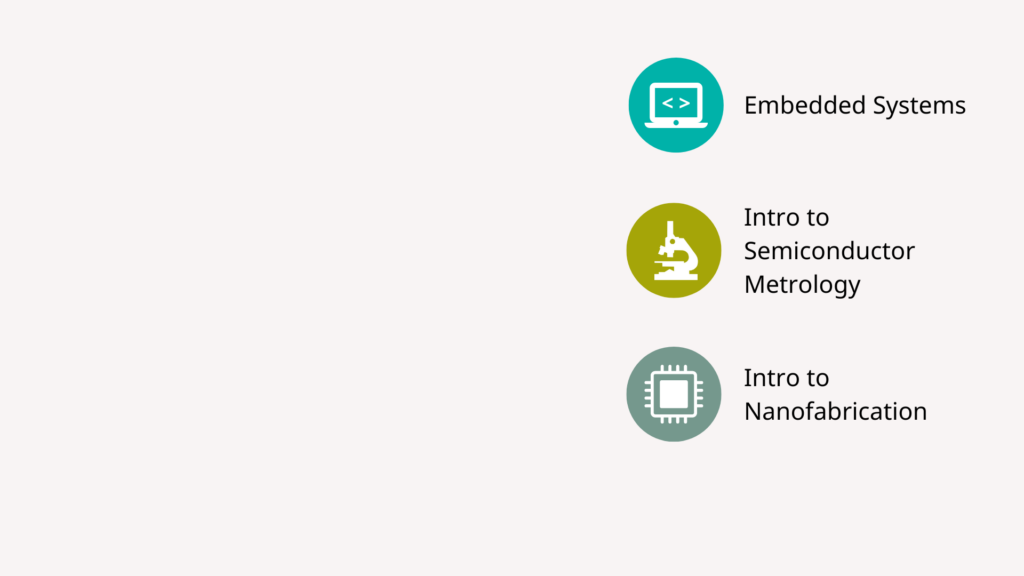
The Hands-On Trainings In Semiconductors is an immersive, hands-on training initiative designed to ignite interest and deepen understanding of microelectronics and semiconductor manufacturing. Open to high school and community college students, this program provides a unique opportunity to explore the fascinating world of semiconductor technology and its applications.
Participants will take part in a fun and engaging 1.5-day training program where they’ll learn about topics like how computer chips are made and how we measure and test them. Each session includes hands-on activities, so students can learn by doing and working with others.
The program uses cutting-edge labs and tools at the University of Michigan, like a chip-making lab, a lab for testing materials, and coding tools like Arduino. Students only need basic knowledge of math and science to participate.
At the end of the program, students will earn a certificate to show what they’ve learned. These certificates can be added to a portfolio to help with future opportunities in science and technology.
Encourage your student to join this exciting program to explore the world of semiconductors, gain hands-on experience, and work on projects that could shape the future of technology!
“I loved the experience, and thought it was really cool to see the different technology we have, as well as getting to see where I might be in the future“
HOTIS Alumna
What Are Semiconductors?
Semiconductors are components of electronic devices. They are also called microchips or integrated circuits (ICs).

Why should I care about semiconductors?
You’re using them right now!
No matter what kind of device you are using to read this, it works because of the semiconductors used to create it.

Mostly, sand!
Semiconductors are made from “pure elements” (which means they’re made of just one kind of atom) or compounds. The most common elements used are silicon and germanium. Since sand has a lot of silicon—between 35% to 52%—it’s a cheap and easy material to use for making semiconductors

Short answer: very carefully.
Semiconductor companies follow a complex process involving many stages of design and manufacturing to perfect semiconductor production. Fabrication labs, also known as “fabs,” use ultra-clean environments and precision equipment to craft tiny, powerful chips. This involves steps like photolithography, etching, doping, and packaging to ensure the chips perform reliably.
Sign up below to learn more about…
- how semiconductors are used in systems,
- what semiconductors are made of, or
- how semiconductors are made.
TRAININGS
Embedded Systems
if (interests.include(“soldering circuits”) && interests.include(“programming projects”)) {
enrollIn(“Embedded Systems Training”);
}
Explore the basics of hardware design and production in this course. Code your own Arduino, solder components onto a R3 Controller Board, and learn what exactly is inside of a desktop computer.
Introduction to Semiconductor Metrology
Feeling like a detective? Join our workshop to uncover the mysteries of semiconductor materials! You’ll use tools like electron microscopes and the principles behind material science to investigate your mystery sample. This workshop includes fun demonstrations and lots of hands-on activities.
Introduction to Nanofabrication
Coming Soon!
Dive into the world of semiconductor fabrication! Learn how to suit up for cleanroom entry, get a behind-the-scenes look at the cutting-edge facilities, and explore exciting technologies like lithography and packaging. With hands-on experience and expert guidance, you’ll get to operate the tools that make it all possible.






To ensure the best experience for all participants, we require a minimum of 10 students for each class to proceed. Registration closes the Friday before the session begins.
FAQs
HOTIS will be held on the University of Michigan campus in Ann Arbor from late August to early December. Please refer to the schedule above for specific course dates.
• Friday (Day 1): 3:30 PM – 6:30 PM
• Saturday (Day 2): 9:00 AM – 4:30 PM
Each morning, participants will meet at the Herbert H. Dow Building. Throughout the day, they will be guided by UM student leaders to various instructional settings and labs around U-M’s North Campus.
HOTIS costs $25 for a one-and-a-half-day session. This tuition includes all program activities during the provided times. A snack will be provided on the first day, and lunch and a snack will be provided on the second day. All instructional costs, supplies, and equipment are included. There is no overnight option.
Need-based scholarships are available. Please see information below.
You are eligible to apply for HOTIS if:
– You will complete the 11th or 12th grade in 2025, or if you are enrolled in a community college degree or certificate program.
– You have an interest in science, mathematics, or engineering.
– You want to learn how you can contribute to the microelectronics field.
We welcome participants of any identity. Only high school-level experience in science or engineering is necessary. Come curious and ready for fun!
All applicants will receive an email within a week of application submission to let them know if they have been accepted to the requested session. Applications are reviewed on a rolling basis.
Please do not send money with your application. Accepted students will be asked to send a non-refundable tuition payment of $25 at least three days before the first day of training. Instructions for payment will be included in the acceptance email. If you have circumstances that require delaying payment, please email maveric-info@umich.edu.
Yes! Need-based scholarships are available. If financial aid is required, select “Yes” for the question “Do you experience financial hardship in paying the registration fee?” in Section 3 of the application. Accepted participants will be contacted to fill out a need-based scholarship form as soon as they are admitted to the training session.
If you are unable to attend camp, we unfortunately cannot offer a refund for giving up your place in the program. If you have special circumstances, please email maveric-info@umich.edu.
To ensure the best experience for all participants, we require a minimum of 10 students for each class to proceed. Registration closes the Friday before the session begins.
If MAVERIC is forced to cancel programming due to insufficient enrollment, a public health concern, or weather-related issues, you will receive an offer to reschedule your session.
Pick-Up/Drop-Off Schedule
| Day | Drop-Off Start Time | Drop-Off End Time | Pick-Up Start Time | Pick-Up End Time |
|---|---|---|---|---|
| Friday | 3:00 pm | 3:30 pm | 6:00 pm | 6:30 pm |
| Saturday | 8:30 am | 9:00am | varies | varies |
For More Information or Questions, Please Contact:
Emily Johnson
ejbook@umich.edu
MAVERIC – Project Manager
Michigan Advanced Vision for Education and Research In Integrated Circuits
University of Michigan